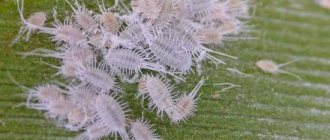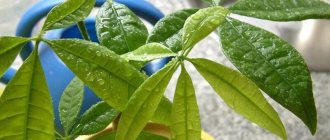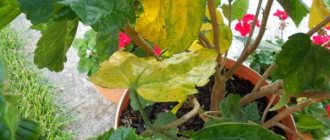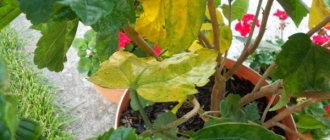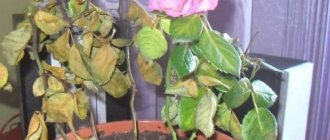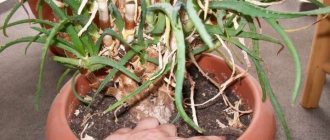At first glance, pelargonium, which we are accustomed to calling geranium, is simply a gift plant. I planted it in any soil, watered it once or twice a week and forgot about it. There are even those who are convinced that it is enough to feed the crop only with tea leaves. But not everything is so simple.
Pelargonium is unpretentious - that's a fact. And there is really no need to carry out any exclusive manipulations with the “grandmother’s flower”. But if you violate the conditions of care or the plant gets sick with something, you will have to temporarily forget about ease of care. Note that, by analogy with the “window” representative of the Geranium family, other indoor crops may begin to mope. How to distinguish a natural process from a pathological state of a plant?
It's simple. Any crop systematically renews its foliage. But new ones are sure to grow to replace the fallen leaves. The second option is that young shoots appear in the place where the leaves grow. If neither of these things happens, then something is definitely wrong with the plant. What exactly?
Pathological causes of leaf fall in pelargonium and other indoor crops can be divided into two groups - violation of care conditions and the presence of infections. In some cases, the second is a consequence of the first.
Reasons why geranium leaves curl
To begin with, the flower is examined in order to understand the cause of this phenomenon and begin to eliminate it as quickly as possible.
The error can occur at any stage of plant care:
- Wrong choice of soil.
- Poor or excessive watering.
- Incorrect temperature and air humidity.
- Lack or, conversely, excess of fertilizers.
- Damage by pests and viruses.
Improper watering
The condition of geranium leaves directly depends on the amount of moisture received. Trying to retain liquid inside itself, the plant reduces the size of the leaf blade. On average, watering should be done every 3-4 days in the summer, during which time the top layer of soil becomes dry.
You need to water with clean, settled (for 1-2 days) water at room temperature. To soften it, add lemon juice or acid. Per liter 2-3 drops or 1 gram.
Hard water contributes to the accumulation of excess calcium in the soil and causes yellowing.
Excess water also has an adverse effect on the condition of greenery. The leaves change color, their edges dry out, the plant rots or becomes lethargic. To prevent this from happening, when planting, you need to remember about the drainage at the bottom of the pot. Loosening the soil at least once a month will help the roots receive oxygen more easily. And the liquid will better pass into the lower layers of the soil and be discharged through holes in the bottom without stagnation.
In the autumn-winter period, geranium is dormant, so it needs to be watered less often, 2-3 times a month. If the plant nevertheless begins to shed leaves and the roots rot, the solution would be to remove the damaged roots and completely replace the soil in the pot.
Soil selection, errors in fertilizing
For planting, you can buy special or universal soil in the store. Or compose it yourself.
The main condition is that the soil should not be hard and heavy, the flora should be neutral or slightly acidified. Mandatory components are sand and peat.
As the soil depletes, mineral fertilizers are applied. Particular attention is paid to nitrogen, which is responsible for the formation of greenery and abundant flowering. The leaves will be the first to signal its deficiency by becoming thin, yellow and faded.
Also, a change in color may be due to:
- Boron deficiency.
- Calcium deficiency.
- Lots of potassium.
Excess fertilizing is also harmful, so it is necessary to choose the right fertilizers and carefully measure the doses indicated in the instructions for the drug. Optimal schedule: once every 2 weeks.
If the plant was recently transplanted, it needs to be fed after two months.
Some gardeners plant geraniums in open ground in the summer. In the fall, when transferring to a pot, it is better not to take soil from the garden bed, in order to avoid infection by fungus or pests. It is optimal to purchase ready-made soil in a store.
Other problems with pelargonium and how to eliminate them
0
Source:
If the leaves of a geranium dry out at the edges and curl, this indicates a lack of moisture (in this case, it is better to move the pot to a more shaded place) and damage to the roots. You can try to replant the plant by treating the root system with a weak solution of potassium permanganate. But just in case, it is better to root several cuttings so as not to lose this variety. If, when the leaves turn yellow, they curl inward, this indicates a lack of nitrogen or an excess of potassium. Only young plants during the period of active growth need nitrogen. To regulate the balance of essential microelements, it is necessary to use special fertilizers for flowering plants.
×
1
Source:
White coating on the leaves indicates spider mite infestation. It must be removed manually, and then the flower must be treated with an acaricidal agent. When a plant gradually fades completely, the reason most likely lies in root rot. In this case, it is also advisable to root the cuttings for replanting, since there is a high probability of death of the diseased geranium. To avoid this problem in the future, it is important to ensure good drainage. Not only yellow but also black spots may appear on the leaves. Dry ones indicate insufficient watering, wet ones indicate excessive watering. Mealybugs are often the trigger for their appearance. A diseased plant gradually sheds its leaves. Geranium is treated with insecticides.
Incorrect conditions of detention
Due to incorrect humidity and temperature indicators, short daylight hours, tight or too loose containers, the leaf plate changes its shape or color.
Lighting
Pelargonium loves well-lit window sills. But it needs to be shaded from direct sunlight, because of which the leaves will get burned. In the winter-spring period, on the contrary, the flower is placed in the sunniest place.
Temperature
In autumn and spring, it is better to keep pelargonium on a glazed balcony. The main maintenance condition is that the air should not be very cold +10…+12 °C.
Optimal indicators:
| Season | Temperature |
| Summer | +20…+25 °C |
| Winter | No more than +14 °C |
Humidity
Geranium does not tolerate air dried out by heating devices. To avoid leaf falling, it is better to purchase a humidifier or use a spray bottle. But you need to spray the liquid not on the plant, but at some distance from it. A container of water or wet expanded clay placed nearby will also solve the problem.
It is better to place the pots away from radiators and ventilate the room once a day. But this must be done carefully, because the plant does not like drafts. It also loses moisture from the surface of the leaves, causing them to curl.
Tight pots
The container in which pelargonium grows should not be small. If the roots become crowded, this will affect the appearance of the foliage. It will begin to dry out and lose color. If the pot is large, then the forces will be directed to the growth of the root system, but the flowers will not appear soon.
A plant planted in a container that is not the right size is replanted. This must be done carefully, because yellowing of the foliage can be caused by damage to the roots.
If the pot is changed during the flowering period, the flower stalks are removed.
Pests and diseases
Geranium is rarely affected by pests due to the bitterness of the juice, but there are those that still settle on the stems and greens. For example, a spider mite, it can be seen with a magnifying glass on the back of the leaves, which are covered with a transparent cobweb, dry and curl inward.
Two more dangerous parasites: whiteflies and aphids, which feed on sap. The drug Marathon or folk remedies (solutions of onions, tomato or potato tops) help fight them. You can prepare an infusion from a head of garlic and a liter of boiling water, let it sit for a week, dilute it with water at the rate of 50 grams per 10 liters and spray the leaves.
To cope with these pests, it is necessary to treat the plant with an insecticide. For example, Akarin, Fitoverm, Molniya, Vertimek. It is better to do this several times at intervals of 5-7 days.
And they are also affected by viral diseases, for example, leaf bacteriosis. Characteristic signs will be not only curling leaves, but also brown spots resembling a mosaic. Wilting even affects the stems. It is impossible to cure such an infection, so it is better to dispose of the flower in order to preserve the health of the plants around it.
If the root system is damaged by rot, when replanting, treat with a solution of potassium permanganate of medium concentration, pink color, for 15-20 minutes. For disease prevention, once every six months and as a top dressing no more than once every 14 days. When pouring crystals into water, it is difficult to calculate the grams and focus better on the resulting color of the solution.
What to do if this happens?
First of all , you need to pay attention to the type and nature of the external manifestations of the disease:
- If the leaves have begun to turn yellow, the problem can probably be corrected by thoroughly watering the soil.
- But brown spots indicate that watering was excessive (find out what to do if geraniums have spots on the leaves here).
- If the affected area looks like a dent or blister, it is possible that the plant has been attacked by pests.
- When the leaves turn yellow and curl, there can be different reasons: low temperature;
- improper irrigation;
- air is too dry.
You should critically assess the situation and provide first aid to the plant:
- if dry, water;
- if he is hot, take him to the shade and observe for a while.
Then the cause of the damage will definitely become clear. In order for geranium to delight with its fresh and blooming appearance, you must comply with the conditions of its maintenance:
- Maintain optimal temperature conditions - +18-20 degrees.
- Provide sufficient light and moisture. In excessively wet soil, the unpleasant disease “blackleg” can develop.
- Sometimes replant in fresh soil. It is better to do this in the spring, since in the spring and until the end of summer the plant is actively growing, therefore it will be easier for it to adapt to new conditions.
- Periodically feed with any complex fertilizer for flowering indoor plants.
Geranium leaves are very sensitive to water, which has a detrimental effect on them. Therefore, the flowers do not need spraying.
We suggest you read articles about what to do if the leaves of an indoor geranium turn white, and why this happens, and how to help a geranium whose leaves turn red.
Mr. Summer Resident advises: how to avoid curling of geranium leaves
It is much easier to prevent a dangerous disease than to fight it. Therefore, the main advice will be prevention.
Measures to prevent curling and yellowing of leaves:
- Regular but not intensive watering.
- Mandatory plant inspection and pest control.
- Optimal temperature and humidity indicators.
- Comfortable and cool wintering. Regular ventilation of the room.
- Timely feeding. Strictly follow the instructions and adhere to the doses indicated on the drug labels.
- Choosing a suitable pot and a bright window sill without direct sunlight.
- In the warm season, take it out into the fresh air.
By following the recommendations and creating optimal conditions for growth, even a beginner will grow healthy pelargonium at home, which will delight you with abundant flowering and caps of dense greenery. After all, a strong plant is much less susceptible to viruses and pest attacks.
Treatment
Let's look at some successful methods of how to deal with various diseases of geranium.
| Disease | Prevention and Treatment Measures |
| Alternaria blight | Avoid overhead watering. Remove and destroy crop residues. To save the plant, apply a fungicide. |
| Bacterial rot | To combat and prevent diseases, buy healthy cuttings or grow plants from seeds. After diagnosis, it is necessary to immediately get rid of infected plants in order to prevent re-infection. Avoid overhead watering. |
| Bacterial fascia | Buy healthy cuttings from a reputable grower or grow plants from seeds. Remove infected plants and cuttings. |
| Blackleg | Use sterile media for propagation. Discard infected cuttings, as affected root cuttings will later develop root rot, which will need to be treated again. |
| Gray rot | Avoid any damage to plants. Remove and destroy dying flowers and leaves. Place plants to allow good air circulation and low humidity. To revive the plants, apply a fungicide. Using only one chemical can result in the development of populations that are resistant to that chemical. Don't rely on just one chemical. |
| Dropsy | The plant must be provided with good air circulation. Avoid overwatering in cool, cloudy weather. |
| Leaf spot | Buy disease-free cuttings. Do not overwater geraniums and always keep the surface of the leaves dry. |
| Root rot | For this disease, try treating the plant with a fungicide. If there is no result, feel free to throw away the diseased specimen. |
| Rust | Buy healthy cuttings and do not use overhead watering. Avoid buying geraniums late in the season. |
| Verticillium wilt of pelargonium | Use sterile potting mix and promptly destroy infected plants. |
| Viruses | Buy plants from trusted manufacturers. Unfortunately, almost all viruses cannot be treated. |
Rust Root rot Leaf spot
When is it too late to help?
- If the geranium has dried out, then the first thing you need to do is inspect its roots. If they are elastic and white, then all is not lost. You need to replant the plant in prepared soil - perhaps it can be revived. If the roots are limp and covered with dark spots, then the bush is unlikely to be saved.
- If the geranium has partially dried out, you can cut healthy cuttings, put them in water for germination, and then plant them.
- When the cause of drying is diseases or pests, then in case of severe damage it is better to give up trying to save the geranium. Often this is simply not possible. Pathogenic spores and parasite larvae remain deep in the soil and can be very difficult to completely remove.
Improper care of geraniums, first of all, affects the foliage - they begin to hurt and change color or curl. Why this happens and what to do when a problem occurs, read our articles.
Yellowing and drying of leaves occurs for a number of reasons, but if you know how to create conditions for a comfortable existence of the plant, then this problem will not bother you. If this does happen, then you shouldn’t despair - you need to give the plant a little time, and after a while the foliage will become beautiful and green again!
Diseases
Geranium is susceptible to diseases such as chlorosis, root rot and rust. The fungal disease rust is considered the most dangerous and, unfortunately, the most common. The first signs of this disease are many small spots of yellow or light brown throughout the leaf part. After a short time, these stains become dry and, when cracked, crumble into a rust-colored powder. This is what fungal spores look like, which can destroy an entire geranium bush. If assistance is not provided in a timely manner, the plant first loses its leaf part and then dies completely.
To save a plant from a harmful disease, it is recommended:
- Trim off all diseased parts of the plant;
- Treat the indoor crop with the most suitable fungicide.
Before using chemicals, you must carefully read the instructions!
Plant parasites and pests
Errors in caring for geraniums weaken its protection against various pests.
Root mealybug
It appears in constantly moist soil and feeds on the roots of the plant. The condition for getting rid of this pest is to remove the infected part of the roots and treat the remaining segment with hot water. After drying, the rhizomes are sprinkled with wood ash and planted in another container.
Leaf spot
Important! The knife is held over the fire or wiped with a sterilizing compound immediately before starting the procedure.
Mealybug
Leaves that develop sticky white mucus are infected with this pest. The parasite is removed manually, after which it is sprayed several times with a soap solution and a small amount of alcohol. Significant damage is treated with insecticidal compounds (Aktellik, Fufanon and others).
Spider mite
If a spider mite appears on a geranium, it will suck all the juices out of the plant. The parasite is a carrier of gray rot and viruses. To get rid of the mite, the plant is removed from the soil and thoroughly washed with warm water or a strong tea decoction is made. Wipe with a soft sponge. Then they are lubricated with a thick solution of soap and, after transplanting into a new pot, without washing off the protective layer, they are covered with a bag. For prevention, all flower pots are disinfected whenever possible, as well as pallets, window sills and even the cracks in them.
